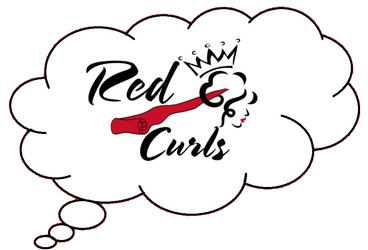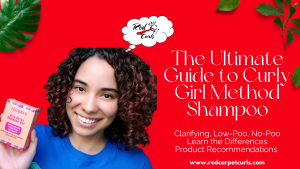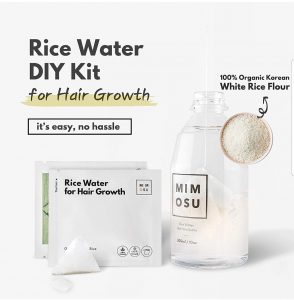What is Apple Cider Vinegar?
Apple cider vinegar is made from, you guessed it, apples! Apple Cider Vinegar is defined as a vinegar made from the juice of apples which passed through two fermentation processes, alcoholic (this is where the sugars are turned into alcohol, ethanol alcohol being the main component) and acetification( exposing the newly made alcohol to bacteria, this further ferments the mixture and turns it into an acetic acid.
This is all fancy wording for, the sugar in the apple juice is converted into alcohol by the yeast of the Genus Saccharomyces (Greek word = sugar fungus). (Rose)
In simplest terms, Apple Cider Vinegar (ACV for short) is the really a byproduct of the fermentation process of apples. A fermentation process is used to enrich the mixture with live cultures, acids, and minerals.
Apples are naturally loaded with potassium, malic acid, calcium, amino acids, and pectin. The fermentation process fortifies the end product (the acv we all use) with even more beneficial acids and enzymes. Raw apple cider vinegar also contains vitamin b, vitamin c, potassium, and calcium just to name a few. If you are interested in all the minerals and nutrients available in ACV, please click one of the resource links at the bottom of this article.
Acv is naturally slightly acidic, so it serves as the perfect alternative to restore the natural ph level of the acid mantle (a very fine, slightly acidic film on the surface of human skin. It acts as a barrier to bacteria, viruses and other potential contaminants that might penetrate the skin.) When the acid mantle is exposed to the acidity of the apple cider vinegar, the mantle hardens the outer layer of the hair strand, this ultimately leads to the “scales” flattening, allowing hair to be more manageable and shiny. ACV has a PH balance (depending on the purity of the ACV and the brand between 2.9. and 4.5.
Here’s an interesting little fact I came across in my research:
*When the PH of the ACV is less than 3.0, the acidity is normally sufficient to protect the cider from spoiling from unwanted micro-organisms.
What does the acid mantle have to do with apple cider vinegar rinses?
Well, I know I introduced some insane looking words right now, but stay with me I promise this will all make so much sense! Let’s get into the science of things, shall we?
I already told you about the acid mantle. It is a very fine, slightly acidic film on the surface of your skin acting as a barrier to protect you from bacteria and viruses. The acid mantle is essential to the appearance of our hair. The cuticle (also known as the outer layer of the hair strand) is made up of very tightly compacted scales. The acid mantle is the key factor in making sure the cuticle scales lay flat (this is the problem of high porosity hair, the scales are all spaced apart and open which is why it is characteristically dry). When the acid mantle is balanced the cuticle will lay flat and give out natural shine, smooth appearance, and protection from moisture loss.
The acid mantle normally has an ideal PH level of 4.5- 5.5. This means it is slightly acidic. When the balance in your hair is disrupted, the acid mantle becomes alkaline. The hair then starts to swell up, the scales in the hair strand start to open up (resembling high porosity hair). This leaves the hair very susceptible to breakage since the moisture is lost through the openings of the scales. This results in frizzy and brittle hair. This can also lead to hair having a ‘dull’ appearance (which is due to the fact that hair is absorbing the light through the open scales causing it to dry out, instead of reflecting the light off of the healthy, tightly closed scales).
Now that you understand the chemistry behind your hair and scalp, we can now get into the science of apple cider vinegar and it’s interaction with your hair.
Apple cider vinegar contains countless nutrients, I want to take the time to especially mention natural alpha-hydroxy acid. Alpha-Hydroxy acid gently exfoliates the scalp and hair. This allows for the removal of dead skin cells and builds up from products and sweat. This, in turn, improves the overall appearance of hair, along with reducing itchiness.
What are the benefits of Apple Cider Vinegar?
- Slightly acidic = ability to restore natural PH balance (Ideal PH balance of scalp and hair is 4.5-5.5)
- Vitamins B, C, Potassium
- Alpha- hydroxy acid = gentle exfoliation of the scalp and hair
- Hardens the outer layer of hair = results in silky, manageable, frizz-free hair
- Anti-fungal, Anti-bacterial,
- Antiviral = relief from dandruff, dermatitis, etc.
- ACV helps lock in natural and even temporary hair color making it perfect to make hair color last longer
- Stimulates hair growth and prevents hair loss
- Prevents split ends and breakage = naturally, conditions hair which removes tangles, Gives hair more definition and bounce
- Natural Conditioner = ACV is known as a natural conditioner because like conditioners it seals the hair cuticle, forming a perfect detangling treatment
How Often Should I Use Apple Cider Vinegar?
The general rule of thumb is less is more with acv. Dry hair typically does well with less acv as compared to acv usage by a person with an oily scalp. Someone experiencing dandruff would benefit from more acv.
- Dry or fine hair = 1-2x a month
- The best place to start is once a month
- Use after you shampoo hair (don’t worry about the cuticles shutting and not allowing moisture, the warm water of your shower reopens them and finishing your shower with a rinse out conditioner will re-seal the cuticle)
- Acv will not make your hair smell once it is rinsed out of hair
- Shoulder length or shorter = will benefit from reducing overall acv in rinse by half (example: 1 cup of cool water to 1-2 tablespoons of acv)
- Deep condition after you do an acv rinse
How Much ACV Can I Use in a Rinse? (These measurements work for a basic rinse or an herb/Essential Oil infused rinse)
As I mentioned earlier, much like makeup, less is more.
- One or two cups of water
- 1-3 tablespoons of apple cider vinegar ( I have found one tablespoon in two cups of water has been enough for my hair (high porosity, fine, and 3a/3b).
I normally take a bottle of Poland Springs water, add 1-2 tablespoons of Bragg’s Apple Cider Vinegar. I also add essential oils!
Can I use Essential Oils in my ACV Rinse?
As I mentioned above, of course, you can! Essential oils are a fantastic option to help soothe a dry itchy scalp. Many essential oils such as Rosemary and Peppermint add a nice fragrance to help mask the smell of the acv. I am a fan of using Mango Essential Oil as a way to cover up the smell. Not to mention these oils help increase hair growth! Essential oils can be used to replace herbs. Herbs are normally added to acv rinses to gain multiple benefits. Adding herbs is a difficult process for most since it requires hours or even weeks to infuse with the water. Essential oils give the same benefits without the waiting period.
What Essential Oils Can I add to my ACV Rinse?
What I love about essential oils is their versatility! Do your own research into which oils can give you which benefits if you want to treat a specific issue. Otherwise, you can use most oils as an option some popular options include:
- Geranium– strengthens the hair
- Tea Tree Oil– helps control oil overproduction which results in oily hair
- Rosemary– improves hair growth increases circulation to the scalp, and stimulates the roots
- Lavender: Helps lift your mood, helps hair growth, conditions the hair and scalp
- Chamomile– soothes the scalp and adds softness and shine to hair
- Clary Sage– stimulates hair growth
- Cedarwood– Stimulates hair growth
- Sandalwood– helps condition dry ends and adds fragrance to the mixture
- Peppermint– adds fragrance and stimulates scalp leading to new hair growth
What measurement of Essential Oils Can I Use?
Please remember that essential oils are very powerful and should be used in small doses.
A popular option is:
- Take two cups of apple cider vinegar and mix in 5-10 drops of your essential oils of choice. (I use about 3-5 drops of each oil, first adding them in a carrier oil like Rosehip Oil, mixing it then adding it to the ACV)
- Store in a cool dark space. (You can store the mixture for up to one year.)
- When ready to use the mix, take 1-2 cups of water (I prefer two cups which is why I use a Poland Springs bottle) and use 1-3 tablespoons of the mixture.
What Herbs Can I Add to my ACV Rinse?
Apple cider vinegar alone is a powerful conditioning agent, but, when mixed with herbs you can also enhance your hair color or target specific hair or scalp issues. Some popular options are:
- Sage– covers grey hair
- Marigold– conditions dry hair
- Nettle– reduces dandruff
- Calendula– conditions dry hair
- Parsley or Rosemary, or Sage– enhances dark hair
- Chamomile– adds natural highlights to brown or blonde hair
- Rosehips– enhances red hair
- Linden– reduces excessive shedding and stimulates new hair growth
- Horsetail: helps condition and repair brittle hair
- Lavender– natural conditioner and stimulant for hair growth
- Southernwood/Goosewood/ Burdock Root/ Plantain – All help fight dandruff
How Do I add Herbs to My ACV Rinse?
Similar to the way you can add essential oils, you can do the same with the herbs. Just remember that the infusion time is going to take much longer from a couple of hours to a couple of weeks.
- Fill a glass jar with two cups of ACV
- Mix in two tablespoons of herb
- Cover and place in a dark cool place to steep for two weeks before straining and moving the mixture into a new bottle.
- When ready to use, take one bottle of water and mix in 2-4 tablespoons of your herb/acv mixture
What is the Difference Between Regular Plain White Vinegar and Apple Cider Vinegar?
The difference between these two kinds of vinegar is really their purposes.
Plain white vinegar (Like ACV) contains acetic acid, which gives the vinegar it’s anti-bacterial and anti-fungal properties. Unlike ACV, it doesn’t contain as many minerals and is mostly used for its disinfectant properties. Some common uses are tenderizing meat or even dilution with water to use as a cleaning solution.
Apple Cider Vinegar is put through a two-step process and by the end contains far more nutrients and minerals than plain white vinegar. ACV is used more for its health benefits such as helping lower cholesterol or losing weight. ACV when organic and unfiltered contains a colony of bacteria known as “the mother.” This little cobb-web looking ball is full of “good bacteria” perfect for the intestines.
Since “the mother” provides so much more added nutrients and benefit, it is perfect for cosmetic use. Since skin is slightly acidic, ACV is the perfect thing to use as a toner to remove bacteria that cause acne and irritation.
When used on the scalp, ACV not only cleans and exfoliates, it conditions as well.
Technically, if you run out of Apple Cider Vinegar you could use plain vinegar as a replacement, just remember it is going to clean but there aren’t going to be the added benefits of the mother, so I greatly suggest adding essential oils for conditioning benefits.
Last Minute Tips from Red Carpet Curls
Remember that proper dilution is vital in this rinse. Too much acv can deteriorate your hair color and hair structure. Please never ever just pour pure ACV from the bottle to your hair. This WILL damage the hair. You can use anything to apply the ACV mixture such as a spray bottle, water bottle, etc.
Once you apply the mixture to your scalp, leave on for 3-5 minutes while massaging the scalp, then rinse out.
Contrary to any rumors you hear, the smell of acv rinses away from your hair after you rinse it out.
As always, remember there is a learning curve with all this curly girl method stuff. Start out with 1-2 tablespoons of acv per 1-2 cups of water and build from there. If you see your hair is a bit drier than normal cut the measurement back to 1 tablespoon of acv. I hope this article has given you more confidence to take charge of your hair care journey. As always if you have any further questions, don’t be afraid to comment below or hit that contact me button!
Resources:
Jabir, Hayder Badr, Fatin Naeem Abbas, and Rana Muhsin Khalaf. “In vitro assessment of antifungal potential of apple cider vinegar and acetic acid versus fluconazole in clinical isolates of otomycosis.” Thi-Qar Medical Journal 5.1 (2011): 126-133.
Johnston, Carol S, and Cindy A Gaas. “Vinegar: medicinal uses and antiglycemic effect.” MedGenMed: Medscape general medicine vol. 8,2 61. 30 May. 2006
Patil, Kiran. “13 Proven Health Benefits & Uses Of Apple Cider Vinegar | Organic Facts.” Organic Facts. N.p., 2019. Web. 4 July 2019.
Rose, Victoria. Apple Cider Vinegar: History and Folklore-Composition-Medical Research-Medicinal, Cosmetic, and Household Uses-Commercial and Home Production. iUniverse, 2006.
White, Yvette. “Benefits Of Apple Cider Vinegar – Easyhealthuk.” Sites.google.com. N.p., 2019. Web. 4 July 2019.




